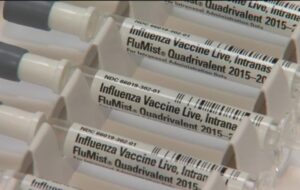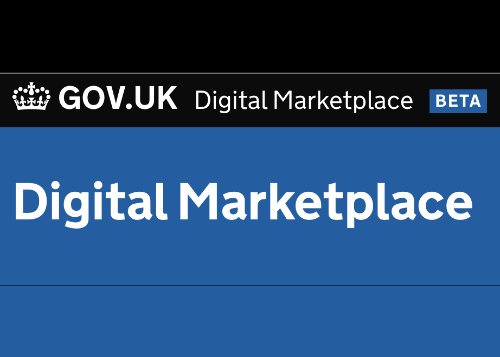Lesson 1: Consent is not as Simple as it Looks
Lesson 2: You Need a Good Flow
Lesson 3: Lots to Do When You Get a Result
Lesson 5: Report in Bulk, at the End of the Day
Lesson 6: Be on Top of Your Workload, See Gaps and Useful Information on Those Under Your Care
The DfE announced on 19th December 2019 that secondary schools must start asymptomatic testing of staff and students from the 4th January. That was when we realised that development work we undertook during the summer of 2019 had a real-life purpose.
Although we were mostly ready, we needed to know exactly who was required to do what so that we can make the final adaptation. The DfE early announcement made some things clear but some of the requirements are still emerging. Nevertheless, by the 4th January, when the first phase of testing was due to start, we were ready with the bulk of the application and more importantly, we were ready to learn and work together with schools about the final tweaks. “The proof of the pudding is in the eating” and we learnt a huge amount in the first 2 weeks of real-life use.
In that time, we set up 175 schools on the system (some are test schools to help training staff) and we have already had nearly 4,000 tests recorded.
For more information, go to the COVID Manager web page or select it from the menu above.
Alternatively, come to a webinar (choice of dates).
Here’s a summary of what we learnt and where we’ll focus next.
Lesson 1: Consent is not as Simple as it Looks
- You don’t know who’s giving consent and you have no recourse to the person who submitted the information.
- What do you do if they change their mind?
- How can you check which members of staff have access to the list of consents?
- If you print it out, how do you make sure it’s the most recent version and how do you make sure it is not copied, or taken outside your school?
We didn’t need to convince schools that a spreadsheet is NOT the solution for this. The benefits were very clear to see in our first demo. The only change we need to make to our system now is to allow for bulk uploading consents taken previously in those spreadsheets, and in many cases, actually asking for staff and parents to provide consent again, this time electronically.
Lesson 2: You Need a Good Flow
- Make it simple to link the barcode to a person.
- When the result is ready, use the barcode to look up the person and then add the results.
- Person arrives at the registration desk.
- Registration assistant checks who they are, and that consent has been given. (Using either SchoolScreener COVID Manager or other form of records of consent).
- Registration assistant scans one of the three bar codes and sticks it on the test kit.
- The registration assistant registers the barcode to the person on SchoolScreener COVID Manager.

- The person being tested enters the booth and collects a sample.
- Those with test kits given can be seen by a different icon and filtered to provide a list of results awaiting.
- The test is completed and passed to the processing assistant who checks that the two barcodes match (if necessary, they can also look up if the barcode is correctly registered to the person).
- The test is performed, and the result (after 30 mins) is passed to the recorder.
- The recorder uses SchoolScreener COVID Manager and scans the barcode on the LFT device and the person’s details come up from a search (identified from the barcode).
- The test result is recorded.
 We’ve made it easy to look up the barcode and add the final outcome.
We’ve made it easy to look up the barcode and add the final outcome.Lesson 3: Lots to Do When You Get a Result
Negative results are simple, you may want to give a person a record of it, and this can be simply printed from the system (or emailed or made available via the consent portal)
Void results are also easy, you can either repeat the test there and then or you can mark the person needing further testing at a selected date:

Positive results need a lot of action:
- You need to inform the person (or parent).
- You need to find who has been close to the person and record your decision for them to be needing further testing.
- You need to make the person who tested positive that they are now in isolation and making a note of when they are due back and marking them for further testing.
You can do all these with a few simple clicks in SchoolScreener COVID Manager.
Lesson 4: Don’t Over-Automate
We are often asked, ‘is it all automated?’ ‘Will it do all the steps for me with a single click?’
It won’t and for a good reason. Behind every case there is a person who is unique, most will follow the steps above, but sometimes you might need to do things slightly differently. We want to make sure you have the flexibility to record your actions and decisions, but you need to decide. Who needs to be tested? When do they need to be tested? We cannot help you there, but once you have decided, they will be easy to see and the information is easy to find.
Lesson 5: Report in Bulk, at the End of the Day
What about recording your results with NHS Test & Trace?
It’s remarkably simple, we provide you with a report with all your results and all the information you need to do this in a single download. You can do this when your tests are all completed for the day and you have dealt with all the immediate needs.
We believe that you will soon be able to import this file into NHS Test & Trace, from February.
Lesson 6: Be on Top of Your Workload, See Gaps and Useful Information on Those Under Your Care
This is a bonus of using SchoolScreener COVID Manager: You can always see your work’s progress at a glance. Icons show current status and you can create filtered lists of anything:
- Who hasn’t sent in a consent?
- Need to know whose results are waiting to be entered? No problem.
- You need a list of people who need to be tested next Tuesday? Just filter the list.
And the bonus is that you can see all your cases (positive or negative) on an interactive map. Is it a class where your positive cases are clustered or is it a bus route?

In conclusion, that wraps up the 6 Lessons we’ve learnt from schools using SchoolScreener COVID Manager in the first few weeks of 2021. There will no doubt be more, but schools can be confident we’ll help them to move quickly in ever-changing circumstances.
For more information, go to the COVID Manager web page or select it from the menu above.
Alternatively, come to a webinar (choice of dates)









